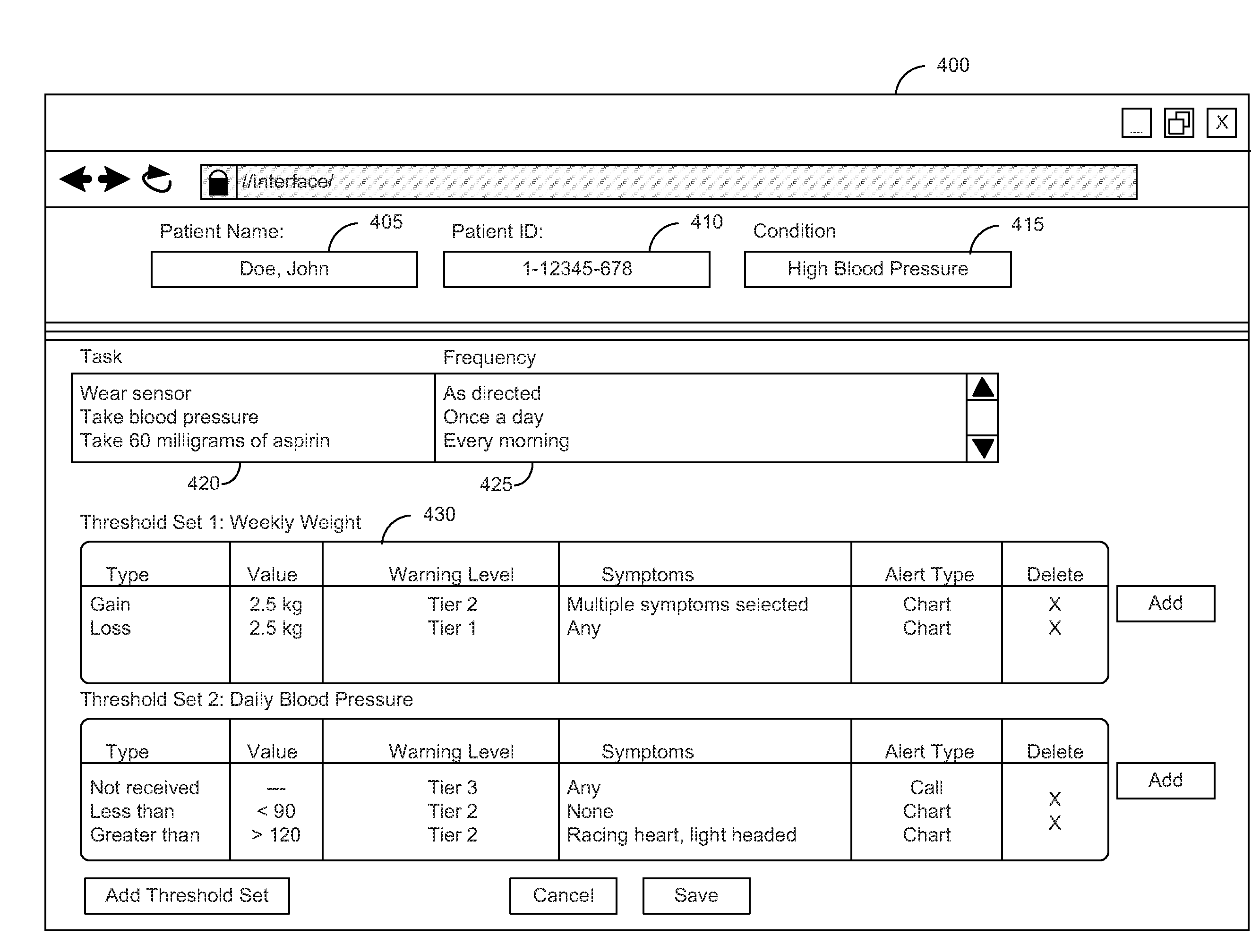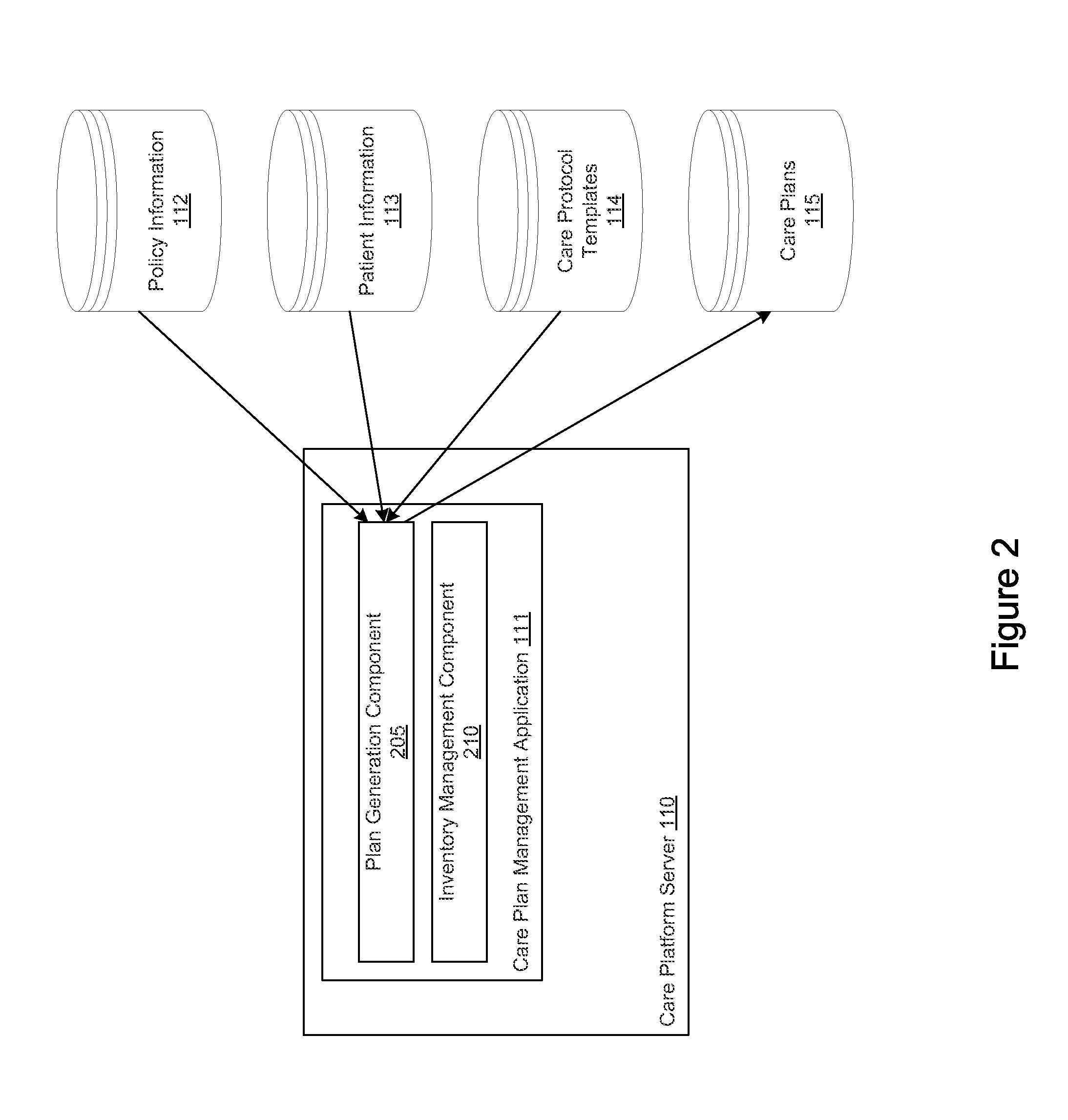Creating individually tailored care plans
a technology for creating individual care plans and patients, applied in healthcare informatics, instruments, therapies, etc., can solve the problems of not being able to modify the care plan otherwise, and the doctor often has no way of determining the patient's adherence to the plan
- Summary
- Abstract
- Description
- Claims
- Application Information
AI Technical Summary
Benefits of technology
Problems solved by technology
Method used
Image
Examples
Embodiment Construction
[0018]Current approaches for providing a care plan to a patient are rigid. For example, in many cases, a physician who has diagnosed a patient with a particular condition may provide the patient with a generalized care plan commonly used to address that condition. Frequently, these generalized care plans are pre-printed documents that are not tailored to any particular patient but rather generally address the diagnosed medical condition. As a result, such printed care plans do not allow the physician to customize the care plan beyond annotating the care plan along the physical and behavioral margins. Such an approach is inconvenient when the physician must address multiple conditions through a care plan. Further, to address multiple conditions, a physician typically has to print separate care protocol pamphlets addressing each of multiple medical conditions the patient has been diagnosed with. Because some tasks in each of the printed pamphlets may overlap (e.g., two different care ...
PUM
 Login to View More
Login to View More Abstract
Description
Claims
Application Information
 Login to View More
Login to View More - R&D
- Intellectual Property
- Life Sciences
- Materials
- Tech Scout
- Unparalleled Data Quality
- Higher Quality Content
- 60% Fewer Hallucinations
Browse by: Latest US Patents, China's latest patents, Technical Efficacy Thesaurus, Application Domain, Technology Topic, Popular Technical Reports.
© 2025 PatSnap. All rights reserved.Legal|Privacy policy|Modern Slavery Act Transparency Statement|Sitemap|About US| Contact US: help@patsnap.com



